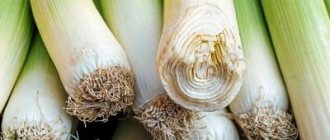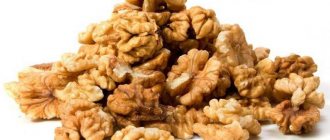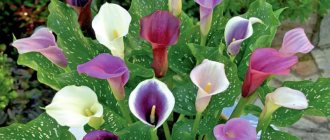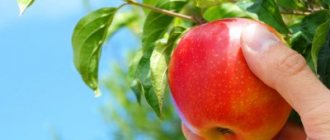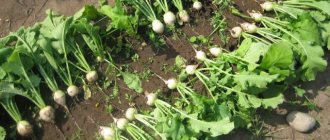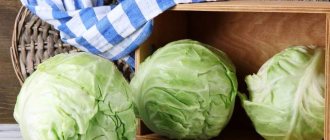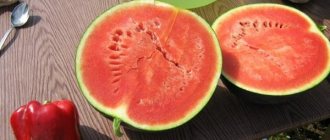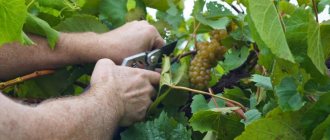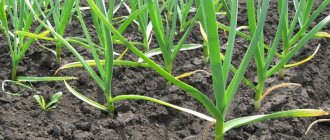When to Harvest a Pumpkin
A mid-season pumpkin variety ripens in about 4 months. Harvest in mid-September. A prerequisite is to have time to cut all the fruits before the onset of frost. Otherwise, the pumpkin will quickly freeze and spoil.
The harvest is harvested on a dry, fine day. If fruit harvesting occurs during a rainy period, the fruits are dried and left for several days in a dry, dark place.
What determines the timing of ripening?
There are early-ripening, mid-ripening and late-ripening varieties. Each of them differs in the speed and conditions of maturation.
Climate plays a key role in plant fruiting:
- in the southern regions, it is customary to harvest on open ground when all the leaves have dried up;
- in the northern regions, the fruits do not have time to ripen; they are picked ahead of time and sent to ripen indoors.
Signs of pumpkin ripeness: when to remove pumpkin from the garden
Most pumpkin varieties have common signs of ripeness. These include the following indicators:
- You can pick a pumpkin if its stalk has dried out and acquired the structure of wood. The size and thickness of the stalk depend on the variety and how large the vegetables themselves are. It is located at the junction of the fruit and the stem. As soon as the pumpkin has collected all the necessary substances and its growing season is over, the stalk begins to dry out and die, turning into a hard, almost wooden tail.
- A characteristic sign of ripeness is the color of the peel. It takes on, depending on the variety, a light yellow or orange tint. Mid-season varieties, which include Butternut or Wax, do not change their color. They remain green or white even when fully ripe.
- In most varieties, signs of ripening are primarily reflected in the density of the peel. It becomes so hard and durable that it is sometimes difficult to cut.
- As soon as the pumpkin ripens, it will begin to draw all the moisture and juices from the plant. The stems and leaves will gradually wither and dry out. This is a clear sign that the fruit can be picked.
It is not advisable to store the harvest with other vegetables and fruits in the same box. Some types of fruit emit ethylene. This gas causes the pumpkin to spoil quickly.
How to understand that a pumpkin is ripe and it’s time to harvest it
How to determine the ripeness of a vegetable in the garden? For beginning gardeners, it is especially important to know the signs that fruits are ready for consumption or storage. Be guided by external manifestations. Do not break the integrity of the fruit or try to pierce or cut it, otherwise it will quickly spoil.
Important! You can remove vegetables only with a knife, carefully cutting it off from the stalk. Do not pick the pumpkin or leave ragged ends on the tail - this will cause pain in the fruit and plant.
Individual signs of fruit ripening
You can check the ripeness of a pumpkin without removing it from the garden. Depending on the variety, each plant signals the ripeness of the fruit differently. Just take a closer look at the bark of the vegetable:
- bush varieties are distinguished by clear light yellow stripes;
- a large-fruited pumpkin has a dark, dense network;
- the bark of muscat varieties becomes brown with light round spots.
External manifestations
External criteria for pumpkin maturity:
- The stalk is dried out, hard, tough. If it is still green, you should let it ripen.
- The leaves and vines on the plant are yellowed and dried out (at least partially).
- Pumpkin has a rich color depending on its variety - yellow, gray-green or dark orange. There are some varieties to which this rule does not apply. There are plants whose fruits remain white or gray even when fully ripe.
- The fruit's crust is hard and dense. There should be no dents left when pressing on it.
- The shell of ripe fruits has a pronounced pattern. The exception is green-fruited varieties.
- Dense pulp structure.
- Hard seed skin, with the exception of gymnosperms.
Reference. Some gardeners recommend focusing on the sound when tapping. If it is ringing, the pumpkin is ripe.
With this simple knowledge, you can easily find out when to harvest your garden. Wherever it is, in the Kuban, in Siberia, in the Leningrad, Moscow regions or in the Urals - these criteria are universal.
Harvest only ripe fruits. If you still need to harvest ahead of time, leave them to ripen in a warm, dry place.
For the convenience of gardeners, manufacturers write harvest dates on the back of the seed bag. Sometimes the description indicates the color of the ripe fruit.
Important! The period indicated by the manufacturers will be accurate only if the summer was warm and sunny.
When to Harvest a Pumpkin
Factors indicating pumpkin ripening
Regardless of the standard characteristics, it is worth focusing on the biological degree of fruit ripening. Then there will be no problems with when to harvest and how to store pumpkin in the Moscow region. You can safely plan your gardening calendar in the fall.
May be interesting Pumpkin: growing in open ground Favorable days for planting pumpkin seedlings in 2021 and timing of transplantation When to harvest pumpkin in the Moscow region and how to store
The first sign of readiness is the drying of the stalk. If it is green and soft, it means that the development and formation of fruits is actively continuing, so it is worth holding off on harvesting. Features of ripe pumpkin:
- The leaves on the shoots turn yellow and become dry, and the fruits themselves change color from dark to orange with possible shades.
- Gardeners have long noticed that larger and sweeter fruits are characterized by a bright and rich orange color.
- The pumpkin skin becomes harder and does not give way when pressed.
- The presence of a dull sound when tapped is another indication of the ripeness of the pumpkin.
Important!
Harvesting should be done in dry and warm weather, which is typical for the Moscow region in mid-autumn. If there is heavy rainfall, it will be necessary to provide additional drying of the harvested crop.
Frosts have a detrimental effect on pumpkins, so you should not allow them to be in the beds when the temperature drops below 4 degrees. Low temperatures negatively affect fruits, giving them a tart sweetness and causing rot. Even if the crop is not yet ready to eat, you can leave it to ripen in a dry and well-ventilated place. To improve and speed up ripening, you can wrap the pumpkin in cling film.
Harvest calendar dates
The calendar dates for pumpkin harvesting depend on the local climate and plant variety:
- in Siberia, the harvest begins at the end of August;
- in central Russia and Ukraine - in mid-September;
- in the Krasnodar Territory - until the beginning of October.
Pumpkin should be picked on a clear, dry day. It is desirable if it coincides with the collection date according to the lunar calendar.
Cleaning according to the lunar calendar
Experienced gardeners carry out all work on the site according to the lunar calendar. It turns out that even harvesting has its favorable days - during this period, all the juices of the plant move to the fruit, saturating it and imparting taste.
Every year the lunar calendar changes. The most favorable dates for collecting pumpkins will be the days when the Moon is in Gemini in its waning phase, Scorpio in its waxing phase, Sagittarius, Capricorn and Aquarius in any phase.
How to determine the ripeness of a pumpkin
One of the main signs of pumpkin ripeness is that it acquires a characteristic color - yellow, orange or grayish-green. But you cannot be guided by color alone, since some varieties become colored very early and do not change their color. You need to pay attention to the following signs of maturity:
- dried and corked stalk;
- well-defined peel pattern and hardening;
- partial drying and yellowing of leaves on the bush.
Young pumpkin leaves contain a huge amount of vitamin C. By the end of summer, all the beneficial substances are transferred to the fruit, and the leaves, having fulfilled their main function of ensuring photosynthesis, begin to die.
Beginning gardeners will be helped to determine the timing of pumpkin harvesting by knowing its variety.
Pumpkin varieties and ripening times
There are many varieties of pumpkin, but there are universal harvest dates:
- Early ripening ones - Mozoleevskaya 49, Golosemyannaya, Almondnaya 35, Biryuchekutskaya 27, Vesnushka, etc. They ripen within 3.5 months, and are harvested in mid-late August. The fruits are quite tender, have a thin crust, so they can be stored for no more than a month. Early ripening varieties are often grown in cold regions: if frostbitten, they are not stored for a long time.
- Mid-season varieties - Smile, Winter sweet, Kroshka, Volzhskaya gray, Stofuntovaya, Lebennaya, Rossiyanka, etc. Ripening period - 4 months. Pumpkins are harvested in mid-September before the first frosts.
- Late-ripening (hard-barked) - Muscat, Pearl, Vita, Testi Delipe, Intercept, Vitamin and Butternut Ponca. They can be stored for up to six months due to their thick crust. The training camps take place in mid-late September. The ripening period is about 200 days, so the pumpkin matures during storage.
Storing the harvested crop
Before leaving the harvested crop for storage, it is advisable to sort the pumpkins by volume into large, medium and small . Experienced summer residents advise leaving fruits only of medium and large sizes, without damage.
How do you know if a pumpkin will rot during storage? If certain conditions are met, it will remain fresh all winter. At a temperature of 25-28°C and a humidity of 80-85%, unripe pumpkins will ripen, the skin will harden, and scratches that can cause rot will heal. If you do see damage, try to heal it by treating it with 3% potassium permanganate.
After a week, it is advisable to move the pumpkin to a cool, dry place, preferably with good ventilation. Favorable storage conditions for the remaining time are temperature +4...+9°C and humidity - 70%.
Owners of private houses can use cellars to store crops; residents of megacities have adapted to storing vegetables on the balcony or in the basement.
In addition, there are a few more recommendations that will help you preserve your crops for the winter:
- arrange the pumpkins so that air circulates between them;
- It is most convenient to store pumpkins on racks, placing straw under them;
- by looking after the storage twice a week, you can immediately notice rotting fruits and protect the rest;
- Do not store pumpkin near fruit.
Reference. Gardeners note better preservation in such varieties as Almondnaya 35, Mozoleevskaya 49, Premiera and Gribovskaya Zimnyaya.
How to store pumpkin
Storing whole fruits after harvest
- The pumpkin will be preserved very well in the cellar, but only if the humidity there is low. That is, the cellar must be dry, with an exhaust hood.
- The room in which you will store the pumpkin (including the cellar) should be well ventilated. But the humidity should not be higher than 60-70%. If the humidity is below 60-70%, the vegetable will not dry out, but rot and mold will not develop.
- You can place the pumpkin for storage on glazed verandas, loggias, or on the shelves of racks covered with cardboard, thick paper or fabric.
- Darkness for storing pumpkins is very desirable. Pumpkin loves shading, so it is better to hang or cover the fruits themselves with thick fabric for racks in bright rooms (for example, on a veranda or loggia).
- It is best to place pumpkins on wooden shelves so that their sides do not touch. If there are a lot of pumpkins, but there is not enough space, then you can arrange them more tightly, but be sure to separate one from the other with cardboard or paper.
- The ideal temperature for storing pumpkin is approximately +10..+15 °C. Then the fruits will remain juicy and edible until spring. It is allowed to reduce the mercury column to +5 °C, but not lower.
- Storage in an apartment is possible, but then the air temperature should not exceed +20..+22 °C.
- Make sure that there are no apples or pears in the pumpkin storage room; quince also falls on this list. These fruits emit ethylene plant gas, which is not harmful, but accelerates ripening. Thus, such close proximity can reduce the shelf life of pumpkins.
- From time to time, check the condition and appearance of the pumpkins, and immediately remove any suspicious spoiled specimens so that they do not “infect” other fruits.
- When storing your harvest, sort the pumpkins by variety. Hard-barked fruits have a very low shelf life, but nutmeg varieties, on the contrary, can be stored for a long time in proper conditions.
How to store cut pumpkin
- If you cut the pumpkin, but only used part of it, of course, you need to save the rest. To do this, wrap the cut area and areas not covered with peel tightly with cling film or foil. This way the cut pumpkin can be stored for 2 weeks or even a month in the refrigerator.
- You can also use another method of storing cut pumpkin: to prevent moisture from evaporating from the surface of the cut, lubricate it with a very thin layer of vegetable oil, preferably odorless. To make the layer of oil thin and even, it is good to use a pastry brush. Keep refrigerated.
Do you have your own ways to store pumpkins? Write in the comments, we are waiting.
Pumpkin harvest, photo:
Advice from experienced gardeners
Growing pumpkins has its own tricks:
- The last time to water the vegetable is 3 weeks before harvest.
- In rare cases, you can check the ripeness of the pumpkin by pressing on it with your fingernail. If the peel is pressed through and is green inside, then it is not ripe. But such a test is fraught with rotting of the entire fruit.
- If you don't have enough space to store vegetables, you can cut the pumpkin into pieces and freeze it. This preparation is used for preparing all dishes except pumpkin juice. Drying and drying vegetables is also popular.
- Pumpkin should not be kept until spring. In this case, it begins to stale and become “cotton,” losing its taste and juiciness.
- If the season has been cold and rainy, the harvest time has come, and the pumpkin is not yet ripe, you can speed up this process. 3 weeks before the first frost, all flowers from the pumpkin should be removed and the tops of young shoots should be pinched. To speed up the ripening of large fruits, all small pumpkins are removed from the bush.
Harvesting pumpkins - how to pick them correctly
By following simple rules, you can ensure long-term storage of fruits. In this case, both the harvesting process and the storage conditions for pumpkins are equally important.
Harvest:
- For these purposes, choose a nice warm day. Having time to collect pumpkins from the beds before frost sets in is the most important condition, because even slightly frozen fruits will not be stored for long.
- If you transport fruits by car, make sure that the pumpkin bark is not damaged during transportation. Through the “trauma” on the rind, microbes will penetrate into the fruit, the action of which will lead to rapid and inevitable damage to both the individual pumpkin and the entire harvest subsequently.
- When removing fruit from the stem, use a sharp garden knife or pruning shears. If you try to tear off or unscrew the pumpkin from the loop, the stalk will be damaged, in which putrefactive processes will begin and, as a result, bacteria will multiply. The length of the tail should be at least 5-7 cm. When harvesting the pumpkin (when moving it), do not hold the stalk, but grab the fruit by the sides and bottom.
Some gardeners advise not to move pumpkins indoors immediately after harvesting, citing the fact that the rind of the fruit should additionally dry out a little in the fresh air. This factor will not be superfluous, but if weather conditions do not allow or for some reason you cannot leave the pumpkins outside, moving the fruits to a warm and dry place immediately after removal from the beds will not harm the harvest.
